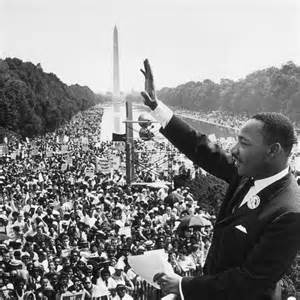 A crowd of more than 200,000 people assembled at Lincoln Memorial on August 28, 1963, for the “March on Washington for Jobs and Freedom”—though most of us think of it as the date that Dr. Martin Luther King, Jr. delivered his “I Have a Dream” speech. The speech was the culminating event of a day of singing, talking, and political activism. Here are a few ways you can incorporate that speech into the classroom.
A crowd of more than 200,000 people assembled at Lincoln Memorial on August 28, 1963, for the “March on Washington for Jobs and Freedom”—though most of us think of it as the date that Dr. Martin Luther King, Jr. delivered his “I Have a Dream” speech. The speech was the culminating event of a day of singing, talking, and political activism. Here are a few ways you can incorporate that speech into the classroom.
How Big Are Martin’s Big Words? Thinking Big about the Future
Inspired by the book Martin’s Big Words, students explore information on Dr. King to think about his “big” words, then they write about their own “big” words and dreams.
Entering History: Nikki Giovanni and Martin Luther King, Jr.
Nikki Giovanni’s poem “The Funeral of Martin Luther King, Jr.” is paired with Dr. King’s “I Have a Dream” speech, taking students on a quest through time to the Civil Rights movement.
Exploring the Power of Martin Luther King, Jr.’s Words through Diamante Poetry
Students explore the ways that powerful and passionate words communicate the concepts of freedom, justice, discrimination, and the American Dream in Martin Luther King, Jr.’s “I Have a Dream” speech.
I Have a Dream: Exploring Nonviolence in Young Adult Texts
Students will identify how Martin Luther King Jr.’s dream of nonviolent conflict-resolution is reinterpreted in modern texts. Homework is differentiated to prompt discussion on how nonviolence is portrayed through characterization and conflict. Students will be formally assessed on a thesis essay that addresses the Six Kingian Principles of Nonviolence.
How else can you highlight this historical speech?

